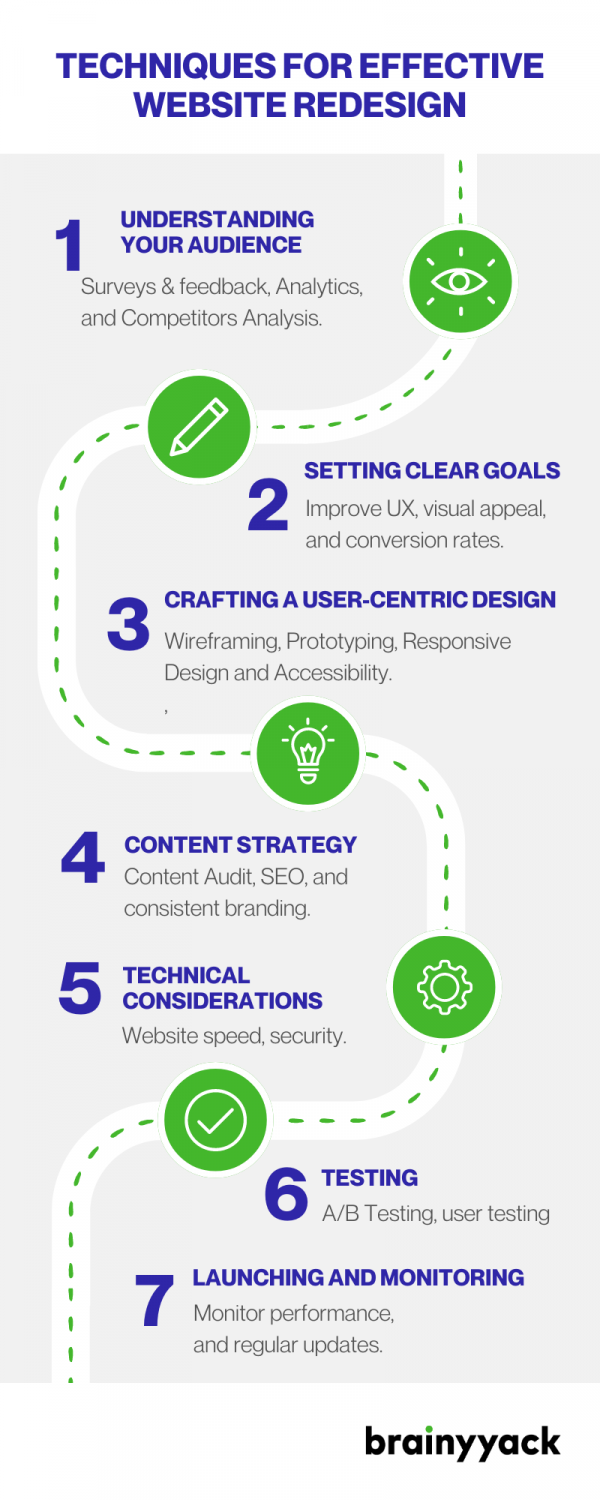Insights
Hands-On Techniques for Effective Website Redesign:
A Comprehensive Guide
In today’s digital age, having a well-designed website is crucial for any business or individual looking to establish an online presence. Whether you’re starting from scratch or looking to refresh your existing site, understanding the Hands-On Techniques for Effective Website Redesign can make all the difference. This blog post aims to guide you through the essential steps and strategies to ensure your website not only looks great but also performs exceptionally well.
Understanding Your Audience
Before diving into the redesign process, it’s essential to understand who your audience is. Conducting thorough research on your target demographic will provide valuable insights. Here are some steps to consider:- Surveys and Feedback: Collect feedback from current users to understand their needs and preferences.
- Analytics: Use tools like Google Analytics to identify user behavior and demographics.
- Competitor Analysis: Study your competitors to see what works and what doesn’t in your industry. We recommend some of these tools to analyze your competitors: Similarweb, and SemRush.
Setting Clear Goals
Having a clear set of goals for your website redesign is vital. These goals will guide your decisions throughout the process. Some common goals include:
- Improving User Experience (UX): Ensure that your site is easy to navigate and user-friendly.
- Enhancing Visual Appeal: Update the design to make it more modern and attractive.
- Boosting Conversion Rates: Optimize your site to increase the number of visitors who take desired actions, such as making a purchase or signing up for a newsletter.
Crafting a User-Centric Design
A user-centric design focuses on the needs and preferences of your users. Here are some **Hands-On Techniques for Effective Website Redesign** that can help:- Wireframing and Prototyping: Create wireframes and prototypes to visualize the layout and functionality of your site.
- Responsive Design: Ensure that your site looks and functions well on all devices, including smartphones and tablets.
- Accessibility: Make your site accessible to all users, including those with disabilities, by following best practices and guidelines.
Content Strategy
Content is king, and having a solid content strategy is crucial for a successful website redesign. Consider the following:- Content Audit: Review your existing content to identify what works and what needs improvement.
- SEO Optimization: Ensure your content is optimized for search engines to improve visibility and ranking.
- Consistent Branding: Maintain a consistent tone and style that reflects your brand across all content.
Technical Considerations
A well-designed website must also be technically sound. Here are some technical aspects to focus on:- Website Speed: Optimize your site to load quickly, as slow-loading pages can drive users away.
- Security: Implement robust security measures to protect your site and its users from threats.
- SEO Best Practices: Follow SEO best practices, such as using clean URLs, proper meta tags, and alt texts for images.
Testing and Feedback
Testing is a crucial step in the redesign process. Here’s how to go about it:- A/B Testing: Test different versions of your site to see which performs better.
- User Testing: Conduct user testing sessions to get direct feedback on the usability and design of your site.
- Continuous Improvement: Use the feedback and data collected to make continuous improvements.
Launching and Monitoring
Once your redesigned website is ready, it’s time to launch. However, the work doesn’t stop there. Post-launch, you should:- Monitor Performance: Use analytics tools to monitor the performance of your site.
- Gather Feedback: Continue to gather feedback from users to identify areas for improvement.
- Regular Updates: Keep your site updated with fresh content and regular maintenance.
Case Studies
To illustrate the effectiveness of these techniques, let’s look at a few case studies:- Case Study 1: E-commerce Website:
An e-commerce site saw a significant drop in bounce rates and an increase in conversions after implementing a user-centric design and optimizing for mobile devices. They conducted extensive user testing and made data-driven decisions to improve the overall user experience.
- Case Study 2: Corporate Website: A corporate website focused on improving its content strategy and SEO. By conducting a thorough content audit and optimizing for search engines, they saw a 50% increase in organic traffic and a higher engagement rate.


